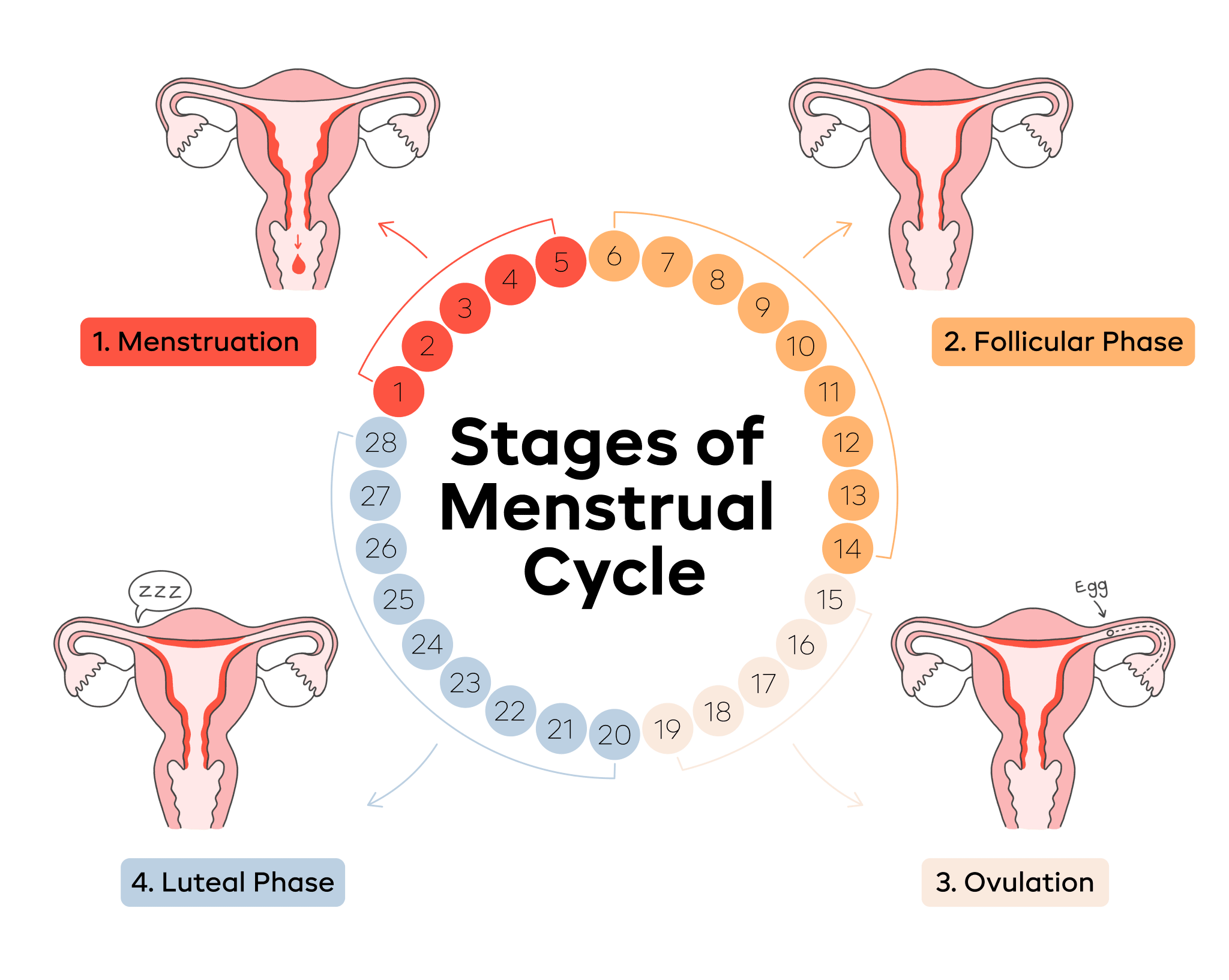
It doesn’t follow a perfect script every time
The menstrual cycle isn’t a straight line. It shifts. It skips. It doubles back. One month is steady. The next, unfamiliar. No two cycles feel the same. Some begin softly. Others don’t wait. Timing rarely obeys the calendar.
People track it, but it’s never fully predictable. Emotions shift without reason. Cramps appear without warning. What used to be regular can suddenly break pattern. And still, it’s called normal.
Some days feel louder than others
Not every part of the cycle is painful. But some parts echo longer. Bloating. Pressure. Heaviness. They don’t always match the bleeding. Sometimes they come earlier. Sometimes later.
Hormones move differently each time. The body reacts with confusion. Food cravings. Sudden tears. Or silence. These days arrive uninvited. They don’t ask for understanding. They just stay a while.
Ovulation doesn’t mean pain, but it can
Ovulation usually happens mid-cycle. Around day 14, but not always. It’s not marked by symptoms. But some feel it—sharp twinges, brief cramps, extra discharge.
It’s the release of an egg. That’s all. But it shifts hormones again. Some feel more energetic. Others notice nothing. It’s a peak that passes quickly. But it still matters, even when silent.
Bleeding doesn’t always mean the same thing
The start of bleeding is called Day 1. But what starts it isn’t just blood. It’s a drop in hormones. A decision the body makes. No pregnancy. Time to reset.
The uterus sheds its lining. That’s the bleeding. It can be light. Heavy. Bright red. Or dark. None of it is strange. Even spotting has its place. The body doesn’t always explain why.
Hormones start rising even before the bleeding ends
Estrogen begins to climb early. Sometimes while bleeding is still present. It prepares for the next try. A new cycle builds while the old one finishes.
That overlap confuses many. You feel tired but also alert. Your mood lifts, even as your body aches. The cycle doesn’t wait for rest. It keeps going.
The follicular phase starts quietly
This is the first half. From Day 1 to ovulation. Hormones build. Estrogen leads. The uterus prepares. The ovaries choose follicles. One will grow, the others won’t.
Energy returns during this time. Focus improves. Work feels easier. But it’s not the same for everyone. Some feel nothing at all. That’s still valid. Not every cycle follows the textbook.
Right in the middle, everything shifts again
Ovulation marks the shift. Estrogen drops. Progesterone begins. It’s fast. Quiet. Often unnoticed. But powerful.
Fertility peaks here. That’s why many track it. But the body doesn’t always give signs. Some use tests. Others guess. Ovulation isn’t loud. It rarely announces itself.
The luteal phase is where moods often change
Progesterone rises. The body slows down. The lining thickens again. Emotions start pulling in different directions. Some feel calm. Others, restless.
Fatigue appears. Hunger increases. Some gain water weight. Not fat—just fluid. Sleep can become unpredictable. These shifts are hormonal, not imagined. They feel real because they are.
Premenstrual days are not just about discomfort
There’s more than bloating. There’s frustration. Sensitivity. Sometimes sadness. The brain and hormones miscommunicate. Reactions grow sharper.
You feel things stronger. Everything matters more. And it feels irrational. But it’s part of the cycle. Not weakness. Not overreaction. Just chemistry, misunderstood.
Some people stop bleeding but still feel symptoms
The end of bleeding doesn’t mean peace. Cramps might continue. Mood changes may linger. Hormones take time to settle.
Even in the absence of blood, the body still works. It shifts gears slowly. Some cycles feel longer than others. That’s not abnormal. That’s how bodies move.
Cycles can change after stress, travel, or illness
It’s not always hormones alone. External life matters too. Stress can delay ovulation. Travel can shift timing. Sickness might pause everything.
One irregular month doesn’t mean something is wrong. But repeated changes might need attention. The cycle responds to life. And life isn’t stable.
Birth control changes everything about the rhythm
Hormonal contraception creates a controlled cycle. Bleeding might not be real menstruation. It’s withdrawal. The body isn’t ovulating. The hormones come from outside.
That’s why symptoms may lessen. Or change completely. The cycle becomes artificial, but predictable. Still, every body reacts differently. Some adjust quickly. Others never feel right.
Perimenopause slowly rewrites the rules
Cycles shorten. Then stretch. Then vanish. Hormones become erratic. Bleeding patterns shift. The old rhythm fades away.
This can last years. It’s not sudden. Some months return to “normal.” Others don’t. Tracking becomes harder. But it still helps. Even as the end approaches, there’s value in observing.
Talking about it still isn’t easy for everyone
Some people hide their pain. Others joke to cope. There’s shame around cycles. A sense of secrecy. It doesn’t have to be that way.
Understanding begins with language. Naming what’s happening. Saying it without fear. The more we speak, the less we hide. The body deserves honesty.
